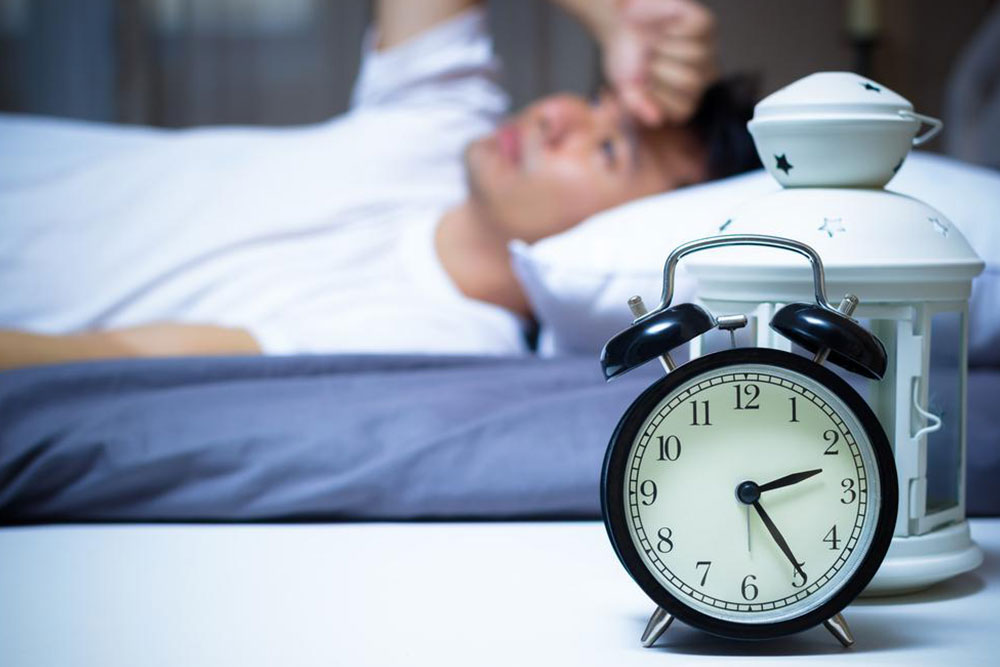Comprehensive Guide to Sleep Cycles and Managing Common Sleep Disorders
This comprehensive article explores the stages of human sleep, common sleep disorders like insomnia, sleep apnea, and narcolepsy, and provides practical tips for improving sleep quality. Understanding sleep cycles is crucial for recognizing and managing sleep issues effectively. The piece emphasizes the importance of sleep health for physical and mental well-being, offering guidance on diagnosis and lifestyle adjustments to promote restful sleep.

Comprehensive Guide to Sleep Cycles and Managing Common Sleep Disorders
Getting a restful and uninterrupted night’s sleep is vital for maintaining good health, boosting mental clarity, and enhancing overall quality of life. Sleep isn’t merely a passive state; it involves a complex series of stages that are crucial for physical and mental restoration. Unfortunately, many individuals face challenges with their sleep quality, either due to environmental factors, lifestyle choices, or underlying health conditions. Understanding the intricacies of sleep cycles and recognizing common sleep disorders can empower you to take proactive measures to improve your sleep health.
Understanding Human Sleep Cycles
Sleep is a dynamic biological process involving multiple stages that repeat cyclically throughout the night. Disruptions at any stage can lead to sleep disorders, affecting mood, cognitive function, immune health, and overall well-being. Here’s an in-depth look at each stage of sleep:
Stage 1 (NREM Sleep)
This is the lightest sleep phase, serving as the transition from wakefulness to sleep. During this stage, your muscles relax, heartbeat slows, and your breathing becomes regular. It typically lasts about 5-10 minutes and is easy to wake from. Muscle movements may occur, and you might experience fleeting images or sensations.
Stage 2 (NREM Sleep)
Stage 2 accounts for approximately 45-55% of total sleep time. During this phase, body temperature drops, eye movements cease, and heart rate further decreases. Sleep deepens here, and breathing becomes more regular. The body prepares to enter deeper sleep stages while remaining relatively light enough to wake.
These initial stages comprise the majority of the sleep cycle. Following this, the sleep progresses into deeper restorative phases:
Stages 3 and 4 (Deep Sleep or Slow-Wave Sleep)
Collectively known as deep sleep, these stages are vital for physical renewal, tissue repair, and memory consolidation. Deep sleep is characterized by slow brain waves called delta waves. It typically occurs in the first half of the night and accounts for about 10-20% of total sleep time. During this phase, waking a person becomes more difficult, and grogginess may occur if awakened suddenly.
Stage 5 (REM Sleep)
Rapid Eye Movement (REM) sleep, usually beginning around 90 minutes after falling asleep, is when most dreaming takes place. During REM, eye movements are rapid, muscles are paralyzed to prevent acting out dreams, and brain activity resembles wakefulness. REM sleep is crucial for cognitive functions such as learning, memory formation, and emotional regulation. The duration of REM sleep cycles increases toward the morning, and multiple REM periods are observed during a typical night's sleep.
The length and proportion of each stage can vary based on age, lifestyle, and health factors. For example, infants and young children spend a larger percentage of their sleep in REM and deep sleep, supporting growth and brain development. Conversely, older adults tend to experience lighter sleep and shorter deep sleep phases, which can impact overall restorative quality of sleep.
Common Sleep Disorders and Their Impact
Despite the natural architecture of sleep, many individuals encounter persistent disruptions or disturbances that can significantly impair sleep quality and daily functioning. Here is an overview of some prevalent sleep disorders:
Insomnia
Insomnia is characterized by difficulty initiating or maintaining sleep. It can be episodic, short-term, or chronic, often caused by stress, anxiety, depression, or unhealthy sleep habits. People with insomnia may also experience early morning awakenings and feeling unrefreshed upon waking. Chronic insomnia can lead to daytime fatigue, irritability, and impaired concentration.
Parasomnias
These unusual behaviors or movements during sleep include sleepwalking (somnambulism), sleep talking, night terrors, and bedwetting. Parasomnias are more common in children but can also affect adults. They often relate to stress, sleep deprivation, or neurological conditions.
Sleep Apnea
This serious disorder involves repeated pauses in breathing during sleep, leading to fragmented sleep and oxygen deprivation. Obstructive sleep apnea results from airway blockages, while central sleep apnea involves brain signaling issues. Symptoms include loud snoring, choking sensations, restless sleep, and excessive daytime sleepiness. Untreated apnea increases the risk of cardiovascular disease, stroke, and other health issues.
Narcolepsy
A neurological disorder characterized by sudden, uncontrollable sleep attacks during the day. Patients may experience sleep paralysis, hallucinations, and disrupted nocturnal sleep. Narcolepsy significantly affects quality of life and requires specialized management.
Diagnosing Sleep Disorders
If you suspect a sleep disorder, consulting a healthcare professional is essential for appropriate evaluation. Diagnosis often involves comprehensive assessments and specialized testing:
Sleep Study (Polysomnography)
This overnight test records brain activity, eye movements, muscle activity, respiratory effort, and oxygen levels. It helps identify conditions like sleep apnea, periodic limb movements, and other disturbances.
Electroencephalogram (EEG)
Part of a sleep study, this test measures electrical activity in the brain to detect abnormal patterns associated with various sleep disorders.
Blood Tests
In some cases, blood analysis helps identify underlying health issues contributing to sleep disturbances, such as thyroid problems or nutritional deficiencies.
Tips for Improving Sleep Quality and Preventing Disorders
While medical intervention is vital for managing persistent sleep disorders, adopting healthy sleep habits can significantly enhance sleep quality. Here are practical tips:
Limit caffeine consumption, especially after late afternoon.
Engage in regular physical activity but avoid vigorous exercise close to bedtime.
Maintain consistent sleep and wake times, even on weekends.
Avoid long daytime naps, which can interfere with nighttime sleep.
Refrain from heavy or spicy meals before bedtime to prevent discomfort that disrupts sleep.
Create a relaxing pre-sleep routine, such as taking warm baths, meditating, or reading.
Ensure your sleep environment is comfortable—cool, dark, and quiet.
Recognizing signs of sleep problems early and seeking appropriate medical advice can lead to effective treatment and better sleep health. Prioritizing sleep hygiene, combined with medical support when needed, helps you enjoy restorative sleep and improved overall well-being.





